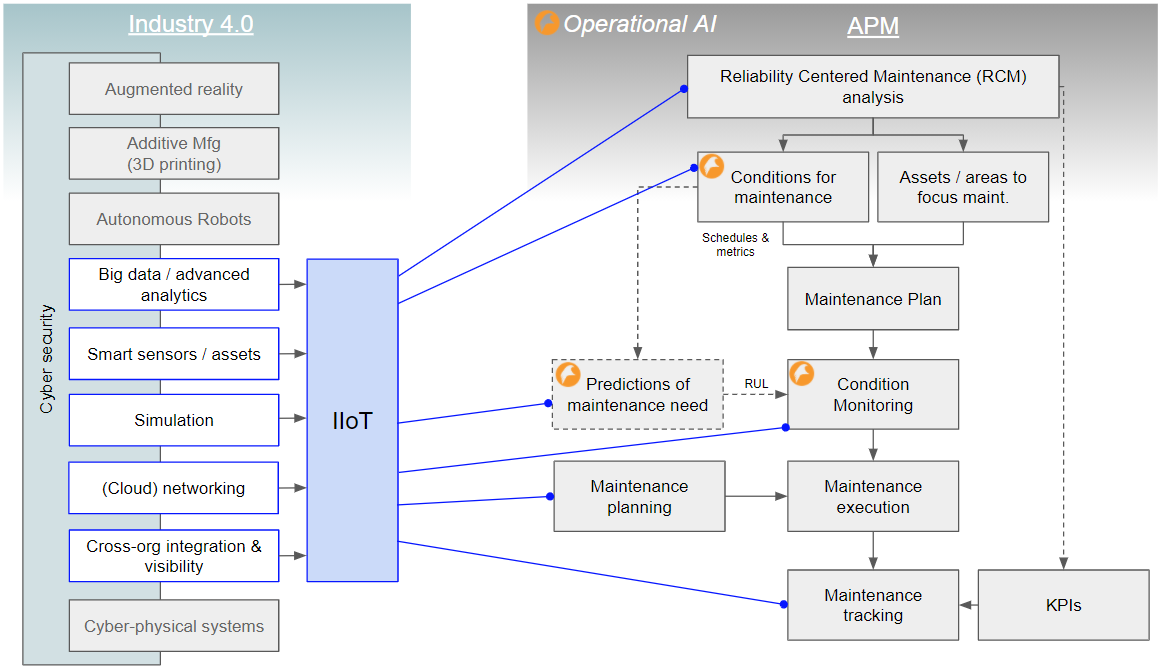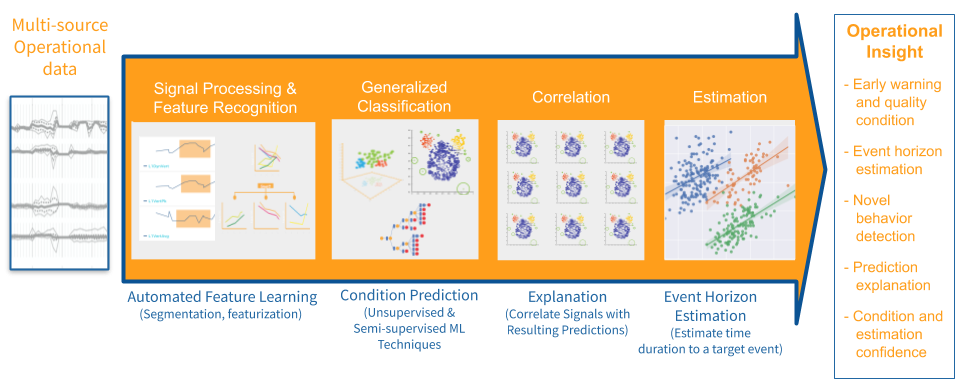Operational AI: the bridge between Operational Technology and Operational management
Key takeaways:
- Operational technology provides a wide range of data but making sense of it is still a challenge
- Industry 4.0 organizations that seek to establish a predictive operational excellence strategy at an enterprise level need an Operational AI platform
- Operational AI facilitates rapid and scalable execution of the strategy by the operations teams
It’s said analysis is only as good as the data. We put forth the corollary that data is only as useful as the analysis it can produce – the true test of the quality of data is the quality of insight that can be produced. Operational technology (OT) and real-time data are produced in large quantities but their value is still largely untapped from an enterprise operational excellence perspective. The main reason this data has been underexploited is that it is too granular and not easily amenable to use in management systems. A platform that surfaces only actionable insights from this data such as warnings, root cause explanations, and time estimates would make the data more consumable for management and operations teams.
We have spoken about Operational AI as an asset- and process-agnostic platform and how it broadly overcomes these challenges. It takes the low level fine grained data and enables more informed and impactful decisions at the enterprise level.

It serves as the bridge between OT and optimization at scale by providing reliability and operational excellence teams the capability to
- Discover anomalous conditions through pattern analysis
- Provide an early warning system for maintenance management
- Assist in root cause explanation for continuous equipment and process improvements
- Provide a time Estimation for critical events like failure, remaining useful life.
The benefits of Operational AI now exceeds its cost and organizations are now focused on exploiting operational data at scale. Optimization at scale allows for the implementation of the Industry 4.0 strategy like Predictive Operational Excellence. This strategy enables organizations to combine their existing enterprise information sources and operations management practices in the context of real-time data. The underlying architecture for this strategy is loosely coupled with data flows and supports a best-of-breed acquisition approach. We are aware of many organized Industry 4.0 efforts across both defense and commercial enterprises to achieve strategic superiority by building organizational capacity to innovate and excel operationally.
A leading steel maker, Ternium, decided to implement Predictive Operational Excellence strategy for their vertically integrated operation. As the first order of business, they implemented Falkonry’s Operational AI to produce actionable insights that can be used by their maintenance teams. These insights were then delivered to their own asset performance management system where operational decisions such as maintenance schedules and production plans were combined to make the most impact through proactive and data-driven decision making. This has allowed them to scale predictive operational excellence across their enterprise. .
An important characteristic of Operational AI is its operational use. That makes it necessary for operations teams to own and evolve it, just like other operational technologies. The following characteristics are highly desirable for adoption although they may not be technically necessary in some cases:
- Work without customization for large numbers of use cases and physical systems
- Multiple mode operating profile to support highly multiplexed or versatile operation
- Presence of complex operational and failure modes
- No more than 1 per year occurrence of any type of undesirable events
- Missing and imprecise records of human action or intervention
- Compressed data and multiple sources of data collected at multiple timelines
Operational AI is built for real world applications that can be improved continuously, and not just theoretical or research experiments that provide one-off solutions and are not scalable. It allows facilitation of knowledge transfer among operational team members and encodes captured human knowledge into an AI system so that it can be exploited directly based on the operational data. These factors allow management to translate the enterprise level operational excellence strategies into fine grained reliability, maintenance and optimization tactics to be implemented by operations teams.
An Operational AI platform like Falkonry Clue, also breaks the problem of how and where to start faced by most management teams. By virtue of being a plug-n-play solution and being easily scalable, management does not worry about finding the best use case, and worrying about how to do a system wide and plant wide implementation of the technology.
Falkonry’s Operational AI platform has proven dual use for both predictive operations in industries such as automotive, oil and gas, metals and mining, and semiconductors, as well as early successes in the defense and intelligence sector for both predictive maintenance (PMX) and electronic intelligence (ELINT) exploitation.





